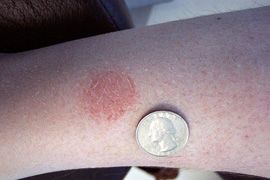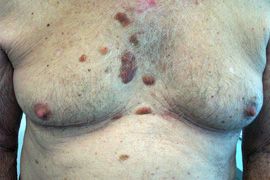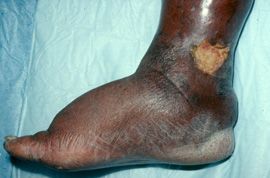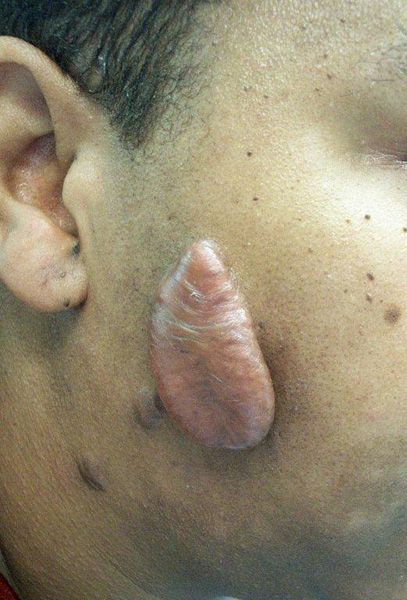Skin Disorders: 5 Shots, 5 Tips (Series #3)
Here: Ted Rosen, MD, presents 5 tips about 5 skin disorders that you might not know.
Case 1

A young woman presents with acute onset, multiple, widely scattered, itchy patches.
Key point: The shape is almost exactly that of a coin, as shown. That confirms the diagnosis of nummular eczema. (Nummular is from the Greek word “numis” for coin.)
Treatment: Mid- to high-potency topical corticosteroids until each lesion is clear.
Note: Often occurs with dry skin; long-term maintenance emollient is advisable.
Case 2

Patient presents with asymptomatic waxy, firm, yellowish-brown nodules.
Key point: This has the appearance of a “deposition” disease. That is, these nodules are filled with cells or metabolic byproducts. A biopsy is mandatory.
Treatment: Biopsy confirmed cutaneous amyloidosis. There is no good therapy.
Note: Amyloid in the skin, especially when accompanied by purpura, suggests underlying multiple myeloma. Investigation for urinary Bence-Jones protein and paraproteinemia is indicated.
Case 3

Elderly man presents with a solitary, depressed, centrally sclerotic, asymptomatic plaque on the temple. Note telangiectasia in the center.
Key point: While most basal cell carcinomas present as an exophytic tumor, some appear to be scar-like in appearance.
Treatment: Morphea-like basal cell carcinoma is best managed by Moh’s surgery.
Note: These lesions can not be treated with curettage and desiccation because of thick collagenous material surrounding tumor islands.
Case 4

Patient presents with slowly expanding, ulceration at the ankle against the background of varicose veins and peripheral edema.
Key point: This is a classic appearance for a stasis ulcer, although it may be slightly more frequently located on the lateral aspect of the ankle.
Treatment: Hydrocollid dressings, leg elevation and compression hose, gentle administration of diuretics and salt intake restriction, and antibiotics if infection apparent. Skin graft may be entertained when granulation tissue appears at ulcer base.
Note: All medical therapy will fail unless the edema is reduced.
Case 5

A 26-year-old patient presents with ongoing adult acne, resulting in unsightly, painful keloids of the face.
Key point: The acne must be addressed vigorously. Even in the absence of recalcitrant nodulocytic lesions, this patient might be a good candidate for isotretinoin.
Treatment: Keloid management remains difficult. Complete excision with extensive undermining to facilitate low tension suturing, followed by post-operative radiation or post-operative imiquimod (to prevent recurrence) would be logical plan. Use of the keloid itself as an autograft may also be a viable therapy.
Note: Adult acne often has a specific cause (medication, hormone imbalance, use of stage makeup). An underlying etiology should be sought.